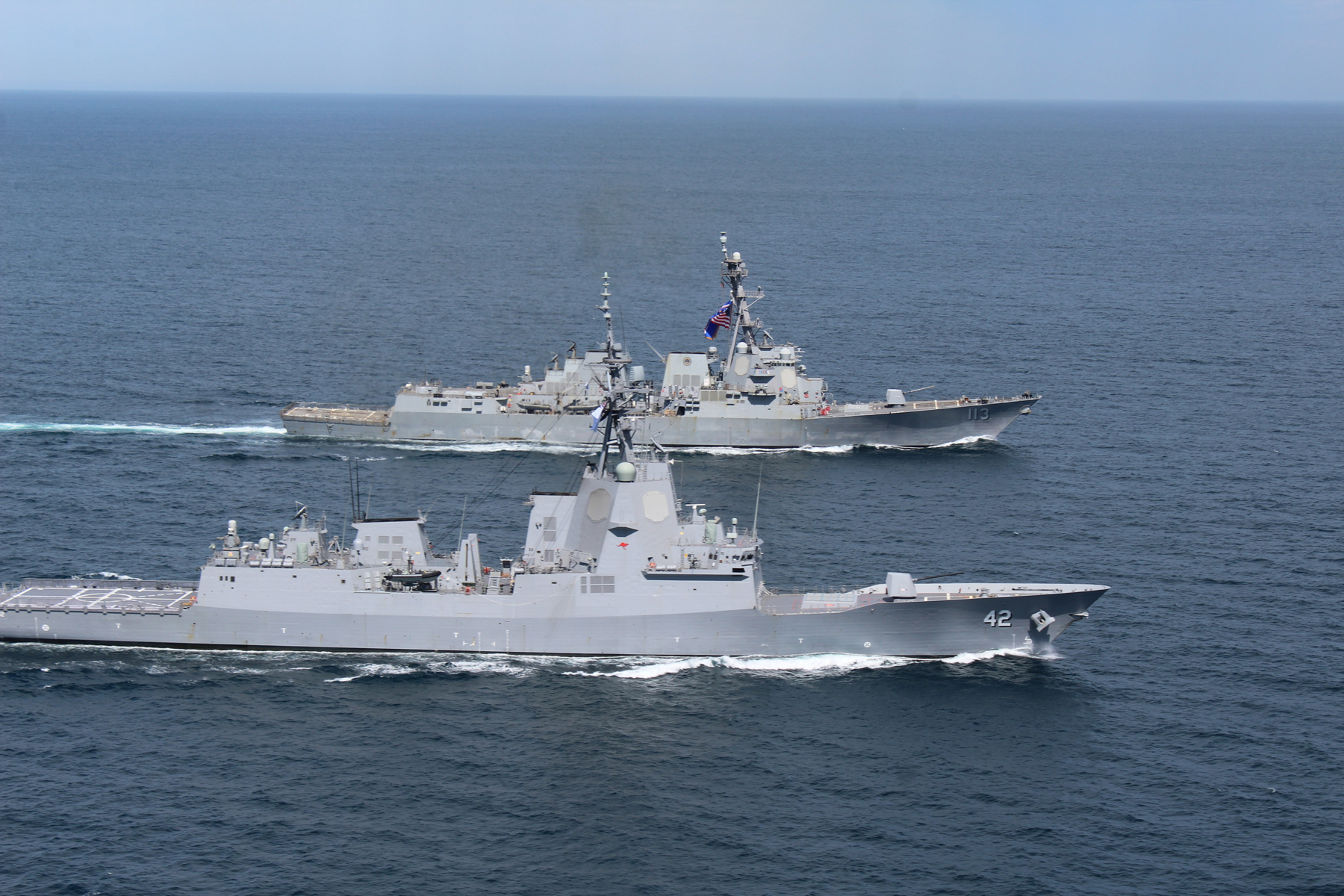
An environmental non-profit group is asking the U.S. Navy to reexamine the impacts its operations in the eastern Pacific have on marine life after an Australian destroyer killed two endangered fin whales while training with U.S. ships, according to a news release.
The bodies of the two whales — one 65 feet in length, the other 25 feet — were found pinned to the bow of the Australian destroyer Sydney when it pulled into Naval Base San Diego on May 8. The pair are thought to be mother and calf.
In a letter notifying the civilian heads of the Pentagon and the Navy of its intent to sue, the Center for Biological Diversity asked that the Navy and the National Marine Fisheries Service reexamine the impacts of naval operations between Hawaii and Southern California. According to the non-profit, the Navy is required by the Endangered Species Act to take another look at its activities.
Kristen Monsell, a senior attorney for the center, said the incident is proof of the harm the Navy can do to endangered marine life.
“I think it is a pretty dark, tragic reminder of the harm that the Navy’s activities can cause to endangered marine mammals,” Monsell said. “Unfortunately, it’s not new — we’ve known for a long time training activities can cause a host of problems to marine life.”
In addition to the risk of ship strikes, sonar can adversely affect whales’ feeding behaviors, Monsell said.
The Navy has faced lawsuits in the past over its operations in this part of the Pacific. In 2013, the center sued the Navy over its training in the same part of the Pacific — known as the “Hawaii-Southern California Training and Testing” corridor. Monsell said the center won that suit and in a settlement, the Navy agreed to implement certain mitigation measures to protect marine life.
By law, the service periodically has to seek and receive approval from the National Marine Fisheries Service to operate in areas with endangered wildlife. In 2018, the Navy entered into a new five-year permit from the Fisheries Service for its training operations. That new agreement was less onerous to the service than the one it agreed to in its settlement, Monsell said.
That five-year permit was extended to seven years in 2020, according to Commander Sean Robertson, a spokesman for the San Diego-based 3rd Fleet. In an email, Robertson said the Navy takes routine precautions to avoid harming whales and other marine life .
“Whenever the U.S. Navy trains and/or tests, it employs protective measures that have been developed in coordination with the NOAA Fisheries,” Robertson said. “Those measures include using qualified lookouts; reducing power or halting active sonar transmissions when marine mammals get within a predetermined safety range; establishing safety zones around detonations; and maneuvering vessels to avoid marine mammals (and) endangered species.”
Robertson also said the incident with the Australian ship is still under investigation and that “we do not have the facts as to when or where the strike may have occurred.”
Monsell said the Navy’s precautions are not enough. She said the service’s mitigation plan doesn’t appropriately account for the service’s relatively new unmanned ships and aircraft and that it should reexamine their impacts on endangered species. She also said there’s evidence that speeds of 10 knots or less dramatically reduces ship strikes and that the Navy should mandate a strict speed limit in biologically important areas and critical habitats.
“All this new information shows that (the Navy’s mitigations) aren’t sufficient,” Monsell said. “We’re asking them to reevaluate it and adopt more.”
Robertson said the Navy hasn’t increased operations in the corridor since its latest permits were issued in 2018 and that whale strikes — which the service is required to track — are rare.
“There have been no reported whale or dolphins killed as a result of Navy activity during the current HSTT permit, and since 2007 there have been only two U.S. Navy ship strikes in the HSTT study area,” Robertson said.
The area is home to a wide variety of animals, Monsell said, including endangered blue whales, fin whales and Hawaiian monk seals. It is an active breeding and feeding area for the animals — activities that leave them vulnerable to ship strikes.
John Calambokidis, a leading expert on West Coast ship strikes, told the Union-Tribune last week that the strikes are dramatically underreported and that studies show large whale species, such as blue and fin, usually don’t respond to approaching ships.
This article is written by Andrew Dyer from The San Diego Union-Tribune and was legally licensed via the Tribune Content Agency through the Industry Dive publisher network. Please direct all licensing questions to [email protected].
© Copyright 2021 The San Diego Union-Tribune. All rights reserved. This material may not be published, broadcast, rewritten or redistributed.
